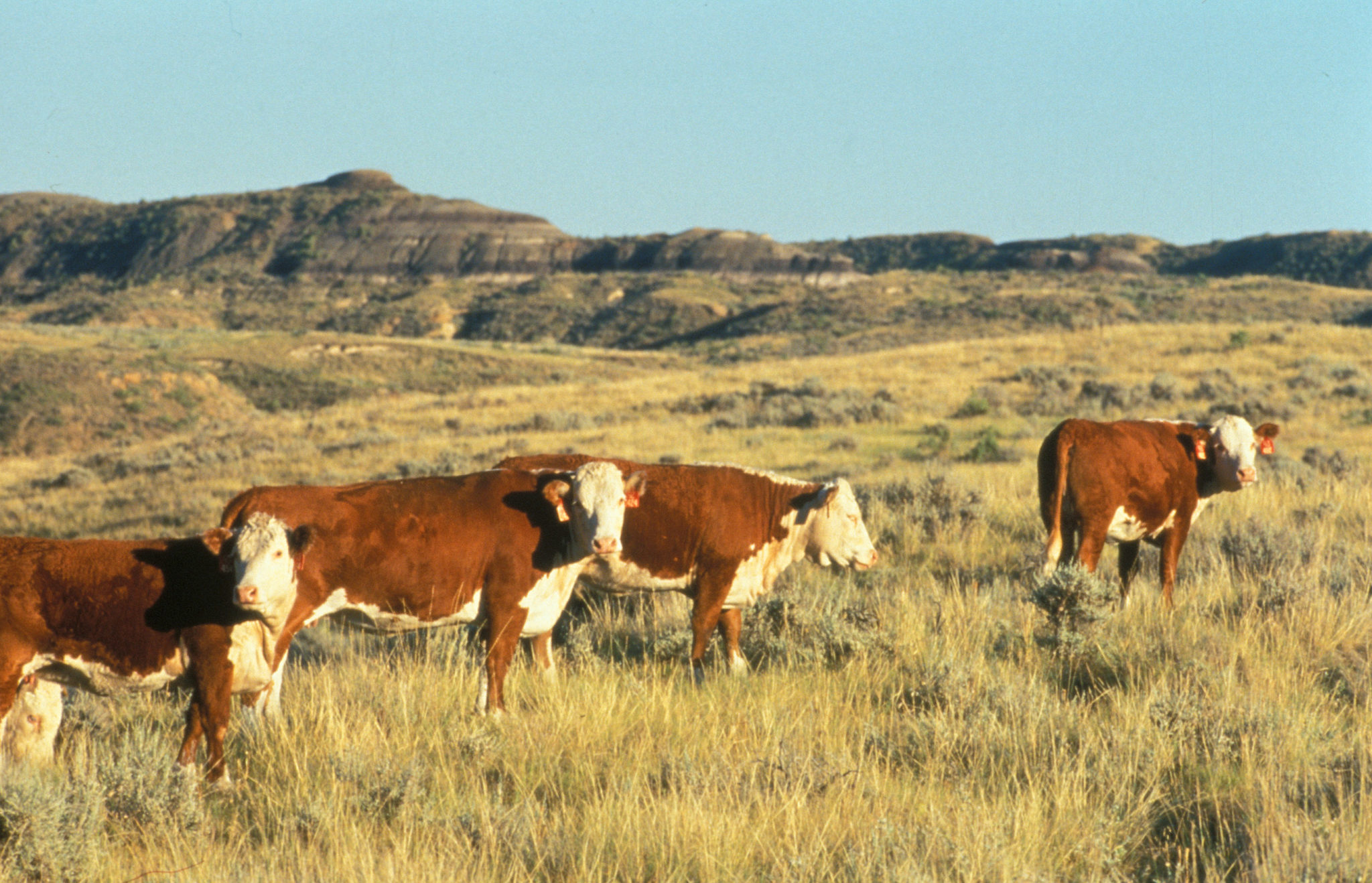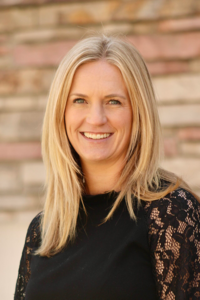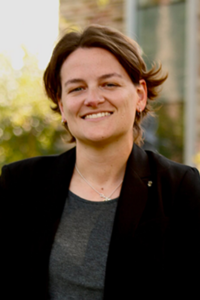
Cattle and climate change
A conversation about the importance of measuring cattle methane emissions
story by Christopher Outcalt
published Sept. 28, 2023
A wicked problem.
That’s how Kim Stackhouse-Lawson, director of Colorado State University’s AgNext program, describes the challenge of meeting the nutritional needs of a growing population and ensuring food production is resilient, even with limited resources.
AgNext researchers study a range of questions at the intersection of animal agriculture and sustainability, but Stackhouse-Lawson and her AgNext colleague Sara Place, associate professor of feedlot systems, focus primarily on researching methane emissions from cattle.
It’s important work. Estimates from the Food and Agricultural Organization of the United Nations indicate animal agriculture accounts for about 11% of greenhouse gas emissions worldwide, Place said.
“So, it’s not nothing,” Place said. “It’s not the largest source. But every sector has to do its part if we’re going to make a big difference.”
The following is an edited conversation with Stackhouse-Lawson, who marks three years at CSU next month, and Place, who has been conducting research at CSU for more than a year and started teaching classes this fall. Stackhouse-Lawson and Place spoke about how their work measuring cattle methane emissions got started at AgNext, what they’ve learned so far and how they hope to help shape the future of agriculture.
How did AgNext get started?

Kim Stackhouse-Lawson: When I started this was a dream. There wasn’t a name. There wasn’t a website. But leadership was pretty clear in what they wanted: A team to solve the wicked challenges in the space of sustainability for animal agriculture. One of the things we did early on was pull together 12 external stakeholders into what we call our Industry Innovation Working Group. That group was fundamental in helping shape who we are — and that’s how this facility was born. They came and said: “Our most significant challenge is understanding baseline greenhouse gas emissions from animal agriculture. How can you help us?” I said, “We need a facility to study it” — and $1.3 million of equipment came in. It came because stakeholders trusted us and we trusted them. It’s allowed us to begin to really compile some impressive datasets. Another thing is we’ve built a team that moves faster than traditional academics. That’s been one of the hard things; an ability to be flexible and nimble and to move and to make adjustments is not oftentimes the norm of an academic institution.
Although there are challenges, it sounds like you also feel there are benefits to working both in academia and also closely with folks in the industry.
KSL: Yeah, it’s interesting; I do think the University is looking at it as a successful new model. It’s part of the land-grant mission, to support stakeholders, and this is an interesting way to do it. It’s been really good for us.
When you talk about the “wicked” challenges you’re trying to solve — what do you mean when you use that word?
KSL: I define it as something that may not have one answer or may not have a right answer. So, oftentimes you’re not looking for the answer, but you’re looking for a better one or one that’s more informed. Enteric methane is a good example because lots of things can be impacted by enteric methane emissions.
Sara Place: Basically: How do you solve problems like climate change that intersect with different human systems, different values? Sustainability in animal agriculture is 100% a perfect example of a wicked problem.
When you were first getting started three years ago, how quicky did you identify that actually measuring methane emissions from cattle was where you needed to start?

KSL: It’s the one thing that hasn’t been done. That’s what needs to happen. We’re never going to move the needle unless someone actually figures out what the emissions are, how to measure them, and what works to mitigate them — mitigate them in the wicked problem fashion. I don’t know if it was our training as scientists, but it was just a very innate response to measure.
SP: Emissions inventories that the U.S. or Colorado share — they’re all based on models, because this is very expensive to measure and complicated to measure. But you only advance the models if you collect empirical observed data. You have to have that relationship where you’re actually measuring to make the models better, to drive change, to test things in the real world. If we didn’t have something to actually measure these things, we’re just kind of stuck with the knowledge we have.
KSL: Yeah, most of the modeling work has been, “How have we changed cattle productions from, for example, the 1970s to today?” Of course, the carbon footprint looks much better, but to Sara’s point: What’s next? How do you get to the next thing? And unless you have facilities like AgNext’s Climate-Smart Research Facility, that innovation is challenged.
Is there more consensus in the cattle industry today than, say, a decade ago around terms like sustainability and climate change?
SP: I think we’ve seen the cattle industry evolve tremendously to be more accepting of those terms and embrace those terms. In outreach events, one of the first things we do is define sustainability for people. So then not everybody is having a different idea in their mind of what we’re talking about.
How do you define sustainability?
SP: To boil it down, it’s thinking about: OK, we’ve got to produce safe, nutritious food — more of it — but we’ve got to do so with environmental stewardship and social responsibility in mind, and we’ve got to think about the economic viability of all the players involved — from a producer side to the affordability of food. That’s why we have people on the team who can fill holes in all those areas.
KSL: And then data is power. Our agricultural producer audiences care about data — data to them makes it real. If you can say: “This is the definition; here’s how we approached it; here’s what we saw; here’s what we think might work; what do you think about this?” Then, eyes light up, and they start seeing a different future that’s good for them.
What’s the most surprising thing you’ve learned so far in three years of doing this work?
SP: On the data side, we’re finding a few surprising things. One is that with some of the high-forage diets we’ve fed, animals were actually emitting more methane than we would predict. The other thing that we’ve found three times now, which is a little bit of a head-scratcher, is that animals eating this high-concentrate diet with more corn grains — their relationship between methane emission and feed-intake is not very strong. That’s very different to what we’re assuming right now in the industry. A lot of folks are predicting methane — but they’re not measuring anything. They’re modeling. And so, they’re using equations that say, “You feed this amount, you get this amount of methane.” That’s not how it works.
KSL: The most surprising thing to me is in three years how important a topic this has become. This is a CEO issue today — in food companies and in agriculture. I’m always blown away by how far producers have come in pure knowledge of this subject — and it’s, “How do we become part of the solution?”
SP: It’s the curiosity of, “OK, if all these sustainability and emissions goals are set, how are we going to do it?”
What does the future of agriculture look like to each of you?
SP: I think it’s going to be about balancing all these other concerns even more. All these questions we’re trying to answer about the future of agriculture: Questions about how should we grow food? What should we be eating? Those are questions that, frankly, have always been relevant. We’ve just changed how we ask them. And so I think it’s going to be a continuation of that in the future.
KSL: Yeah, I think it will continue to be pretty innovative and exciting — and I hope it sheds light on how cool these creatures are. I think they oftentimes get demonized. They’re incredible to be around. I always talk about how majestic they are. Maybe not everybody feels like they’re majestic, but we do. We love them. We wouldn’t do this if we didn’t love them — and the people. I don’t know that there’s more noble work than providing food to the masses — and helping solve wicked problems along the way.
Read more of The Future of Ag is Now
This special report from SOURCE explores the breadth of multidisciplinary, agricultural work happening at CSU — a place where researchers, students and food producers are all collaborating to shape the future of agriculture.